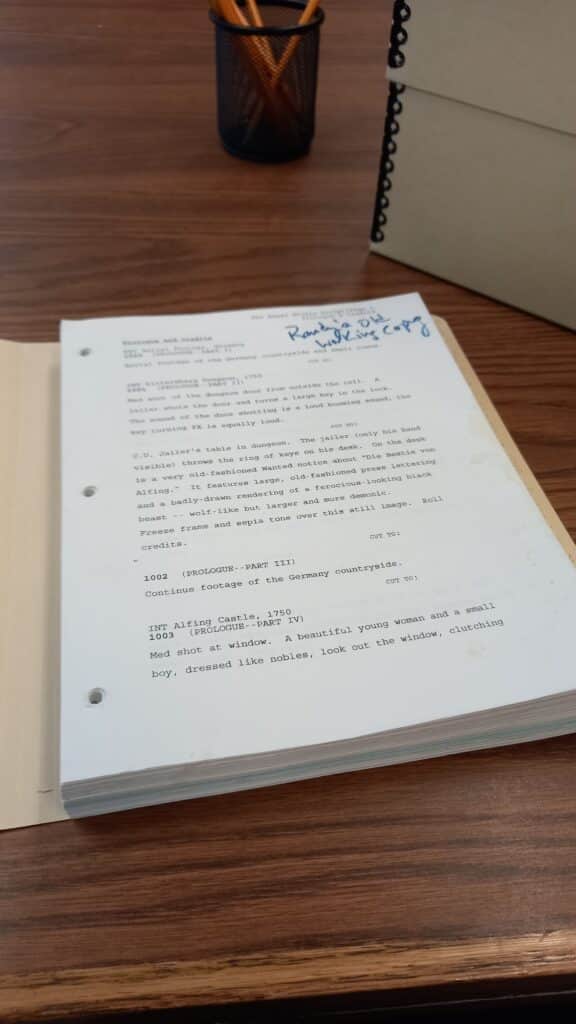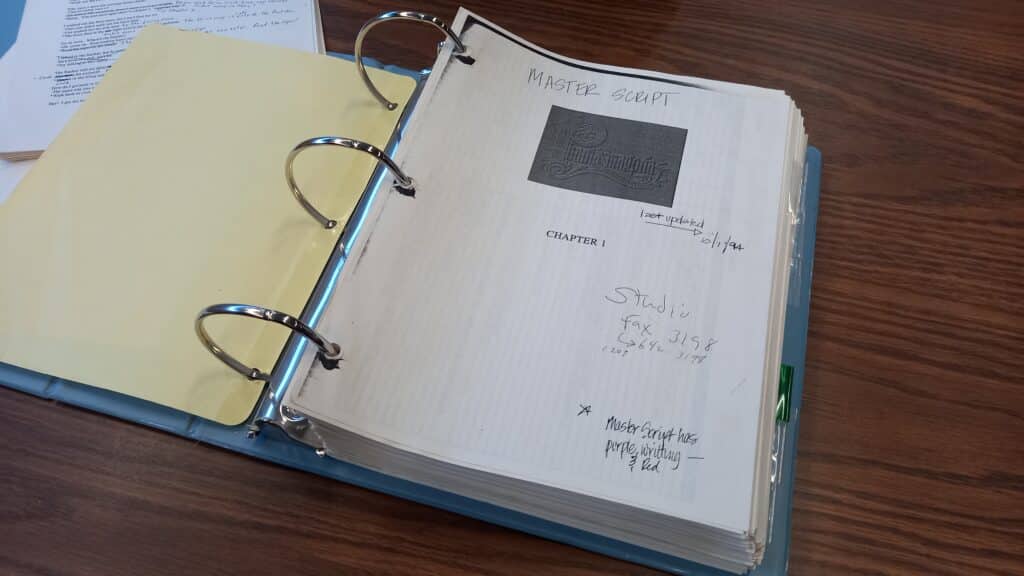Ever signed an NDA? It stands for Non-Disclosure Agreement, basically a contract through which the parties agree not to disclose any information covered by it. Personally, as a screenwriter, I’ve signed a few. About what? Well, that I can’t reveal, of course. That’s the whole purpose of an NDA, right? But what if (hopefully), five or ten years from now, someone becomes interested in the creative process of the project covered by that particular NDA? Will its secrecy have expired by then… or could it even be some kind of perpetual agreement?
To put it simply: can we really make sense of history when a key part of it lives behind a huge secrecy clause?

I’ve been a university professor for 20 years now, teaching—among other things—narrative in video games. And many, if not most, of the professional game scripts and documents I show my students were essentially leaked online by someone. Not the happiest of circumstances, sure, but had it not happened, we would have never had access to a key part of the creative process we’re trying to study. To be clear: we’re not talking about particularly sensitive information here. This is not about budgets or private conversations between members of the development team. It’s about having the chance of carefully analyzing the steps others took before us while building their interactive stories, so we can learn from their experience in order to build our own body of work. Film or TV screenplays are occasionally published in books or other formats, but that rarely—if ever—happens in video games, where interactivity turns what is usually a single document (“the script”) into a collection of different documents and flowcharts, amounting to many times the number of pages of a regular linear screenplay.

In this NDA world that we’re living in, documents like those preserved by the Brian-Sutton Smith Library & Archives of Play at The Strong National Museum of Play become even more important. The library opened its doors for me for the first time back in 2017, during a very short visit, and recently gave me the wonderful opportunity to expand on that work through their fellowship program. For someone who lives 5,500 miles from the museum (I’m from Buenos Aires, Argentina), I couldn’t have afforded this most recent trip had I not been granted this wonderful opportunity. And, I’m very happy to say, the chance to access the kind of documents that are so difficult to come by, generously donated to the Museum by people involved in those very creative processes I was eager to delve into, has allowed me to greatly expand my research work into the evolution of narrative in video games.
I will make sure to share my insights on the matter in every way that I can, but if you’re interested in these sorts of subjects as well, don’t forget those huge binders with hundreds of pages detailing some of the most interesting video games in history, are there for you too.
By Guillermo Crespi, 2023 Strong Research Fellow


